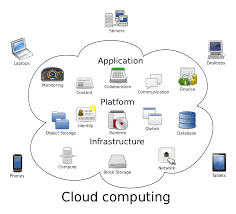
What Is Cloud Computing?
What Is Cloud Computing?
If you’re unsure about what Is Cloud Computing , you’re maybe among the 95% of individuals that are already using cloud services in your daily life, like email, online banking, and social networks, but you do not realize it.
Cloud Computing may be a process for delivering services or resources on-demand.
What Is Cloud Computing? According to the National Institute of Standards and Technology (NIST):
Cloud computing is a model for enabling ubiquitous, convenient, on-demand network access to a shared pool of configurable computing resources (e.g., networks, servers, storage, applications, and services) that can be rapidly provisioned and released with minimal management effort or service provider interaction.
We can say that cloud computing is the delivery of computing services—including servers, storage, databases, networking, software, analytics, and intelligence—over the web (“the cloud”) to supply faster innovation, flexible resources, and economies of scale. You have to pay just for cloud services you employ, helping lower your operating costs, run your infrastructure more efficiently and scale as your business needs change.
In simple terms Cloud Computing is that the use of hardware and software to deliver a service over a network (i.e. Internet). With cloud computing, users can access files and use applications from any device which will access the web.
An example of a Cloud Computing is Google’s Gmail. Gmail users can access files and applications hosted by Google via the web from any device and any location.
How Is Computing From The Cloud Different From Computing From My PC’s Hard Drive?
In old-style computing where data is stored on your PC’s local disk drive, the info within the cloud is stored on many physical and/or virtual servers that are hosted by a third-party service provider. An example of a cloud computing file storage provider is Dropbox. Dropbox files are often accessed from any device via the web.
Type Of Cloud Component
The components are broadly classified into Frontend Components and Backend Components
Frontend Components : Clients: Clients are the devices through which the top users interact. they’re divided into three broad categories: mobile, thin and thick clients. Smartphones and tablets constitute mobile clients, while computers without an indoor disk drive may be a thin client, and thick clients are your typical computers.
Backend Components :Datacentre: it’s a server or a set of servers. Distributed Servers: These servers are spread across multiple locations. Storage, security and other such infrastructures increase the backend list. Through a network, layer cloud establishes the connection between the frontend and backend devices.
Cloud Computing Characteristics
Core characteristics of cloud computing services are:
- Elasticity: Capabilities can be elastically provisioned and unrestricted, in some cases automatically, to scale speedily external and inward commensurate with demand. To the end-user consumer, the capabilities available for provisioning often appear to be unlimited and may be appropriated in any quantity at any time.
- On-demand: Consumers can individually facilitate computing capabilities, such as server time and network storage, as needed automatically without requiring human interaction with each service provider.
- Provider-pooled computing resources: The provider’s computing resources are pooled to serve multiple consumers using a multi-tenant model, with different physical and virtual resources dynamically assigned and reassigned according to consumer requirement. There is a way of location independence therein the customer generally has no control or knowledge over the detailed location of the provided resources but could also be able to specify location at a better level of impression (e.g., datacenter, state or country). Example of resources include storage, memory and network bandwidth.
- Metered service usage: Cloud systems automatically control and optimize resource use by leveraging a metering ability at some level of concept appropriate to the type of service (e.g., storage, processing, bandwidth, and active user accounts). Resource usage is often monitored, controlled, and reported, providing transparency for the provider and consumer.
- Broad network access: Capabilities are available over the network and accessed through standard process that promote use by heterogeneous thin or thick client platforms (e.g. Mobile Phones, Tablets, Laptops, and Workstations).
In this section we have cover what Is cloud Computing? Type of Cloud Component and Cloud Characteristics.





0 Comments: